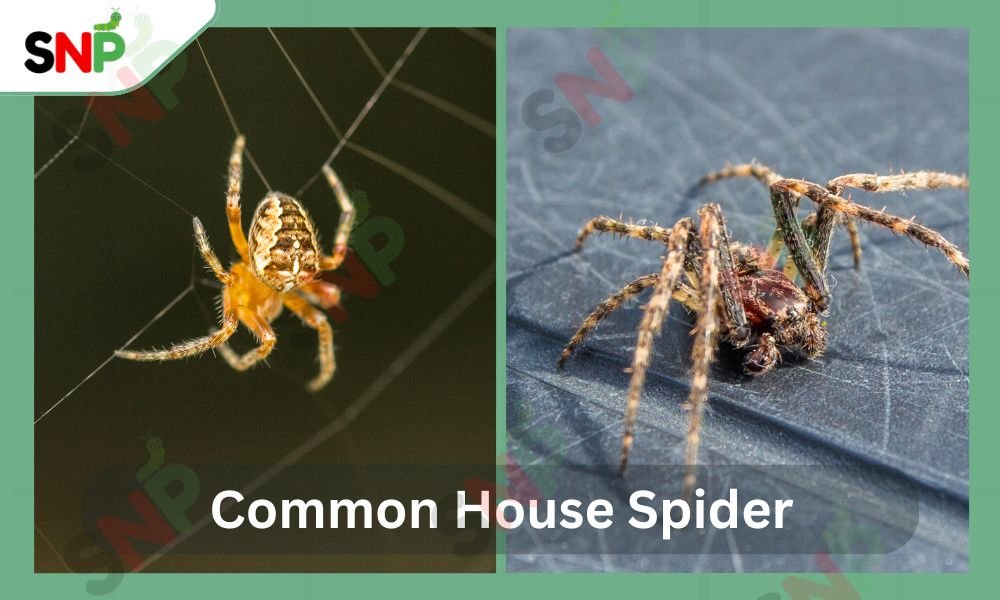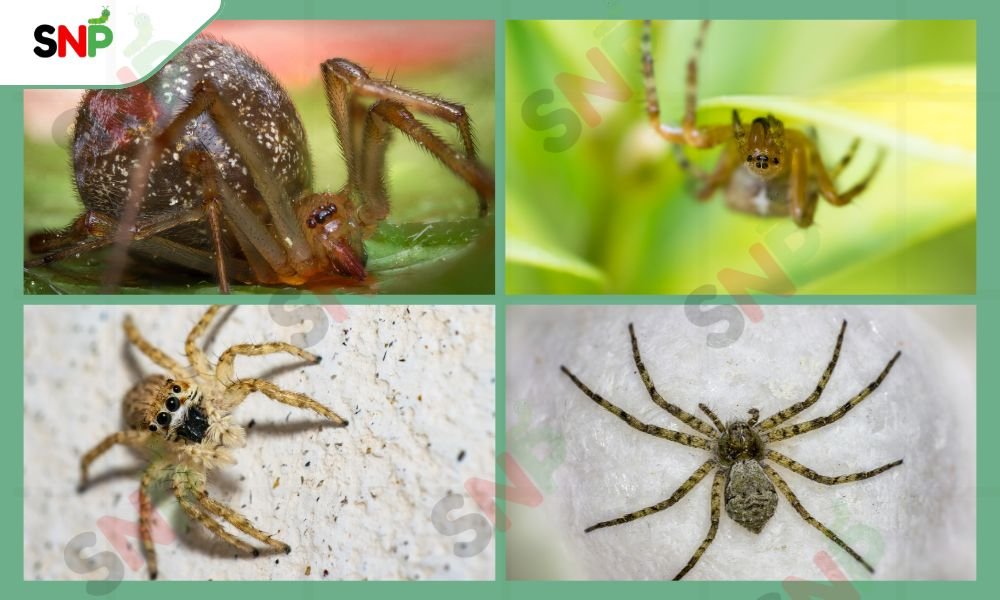Most Common House Spiders in the United States

House spiders are the most common insect we find inside our homes. If you have ever seen their web in one of the corners of your room or suddenly felt something quickly moving across your floor, you are not alone. These common house spiders are almost always found in American households. Even though it may be pretty surprising to see them around, many of them are harmless and help the house cleaners do their job. In this blog post, we will introduce the 10 most common house spiders, including the Wolf Spider, the giant house spider, the jumping Spiders, and the camera-shy wood spider. We will mention their appearance, size, colour, and hiding places we’ll answer the most critical question: Do house spiders bite?
Common House Spiders
Here are the most frequently encountered common house spiders in the United States:
1. American House Spider
- Appearance: Small, with a round abdomen.
- Colour: These spiders have a Dull brown appearance. Male spiders show yellow leg segments, while female spiders show orange leg segments.
- Size: About 1/8″ to 5/16″.
- Where Found: They are found in the Corners, under cabinets, basements, and garages. American House spiders are the most common house spiders and are harmless.

2. Wolf Spider
- Appearance: Hairy and robust, often mistaken for tarantulas.
- Colour: Grey, brown, or black.
- Size: These can grow up to 1.5 inches.
- Where Found: Wolf Spider often found in Garages, basements, sheds, and under debris. They are active hunters and rarely spin webs.
3. Black Widow
- Appearance: Black Widow displays a body in shiny black with visually striking red markings located on its abdominal areas.
- Colour: These spiders display a black body with red markings on their surface.
- Size: 1/4″ to 1/3″.
- Where Found: Typical Locations for this species include dark areas, grassy regions, mail containers and storage facilities.
4. Jumping Spiders
- Appearance: Compact body with large front eyes.
- Colour: Their colour patterns include a black base with stripes, and they also possess iridescent features.
- Size: 1/8″ to 3/4″.
- Where Found: Jumping Spiders from the walls tend to inhabit attics and outside near trees, and they also reside on ceilings and on the walls of interior spaces. Jumping spiders are energetic hunters.
5. Yellow Sac Spider
- Appearance: Slender with a dark V-shaped mark.
- Colour: They have Pale beige or yellow Colour.
- Size: 1/4″ to 3/8″.
- Where Found: It can be found on the ceilings, corners, living rooms, and bedrooms. They hide in silk sacs during the day.
6. Giant House Spider
- Appearance: Giant House Spiders are Large, with long legs.
- Colour: They have Dark orange, brown, or beige Colour
- Size: Can reach up to 2.9 inches.
- Where Found: TIt can be found in Basements, garages, between bricks, and in piles of firewood. The giant house spider possesses a formidable size that does not lead to aggressive behaviour.
7. Woodlouse Hunter (Wood Spider)
- Appearance: Notable for their large fangs and reddish legs.
- Colour: Reddish legs, tan body.
- Size: 3/8″ to 5/8″.
- Where Found: Foundations, basements, and moist cellars, the wood spider is a specialised hunter and rarely bites humans.
8. Checkered Cobweb Spider
- Appearance: Small with checkered markings.
- Colour: These display either yellow or brown pigmentation in their bodies.
- Size: 1/8″ to 1/4″.
- Where Found: The spiders reside close to doorways and window openings within messy home web structures.

9. Common Crab Spider
- Appearance: Flat, crab-like body with long legs.
- Colour: Grey, often bark-textured.
- Size: About 1/4″.
- Where Found: Rural homes, on tree bark, or under debris. These spiders are well-camouflaged.
10. Dark Fishing Spider
- Appearance: Large, with W-shaped marks.
- Colour: Light and dark grey or brown.
- Size: Can grow up to 3 inches.
- Where Found: Near water, basements, woodlands, and sometimes indoors.
All over America, common house spiders like the Wolf Spider, the giant house spider and the Wood Spider, and the jumping Spiders do a lot of good in the household, viz., keeping the insect pest population under control. Their existence is an indication of the home’s healthy ecosystem.
Do House Spiders Bite?
Many homeowners ask whether house spiders are likely to bite. Do house spiders bite? The answer is that most common house spiders are uninterested in biting humans. Spiders only bite humans during life-threatening defence measures or when they feel attacked, although their jaw muscles probably cannot puncture human flesh. An actual spider bite usually produces no more than temporary redness, swelling, and mild irritation resembling a mosquito bite response.
Severe reactions rarely affect the black widow and brown recluse spiders, though these two types are not usually found in homes. Typically, skin irritations that people suspect as spider bites actually stem from either insects or unrelated skin issues. The Wolf Spider, giant house spider, wood spider, jumping spider, flying spider, and other common house spiders are likelier to run and hide than to bite.
Conclusion
Although ordinary house spiders, such as the Wolf spider, jumping spiders, giant house spider, wood spider, and the flying spider may look terrifying, most are not harmful and are the best fighters in the anti-revolting war against household pests. Case reports of people being bitten by these spiders are rare and usually not serious. Regular home cleaning and expert pest control consultation are the most effective methods to maintain your home free from spider webs and toxins. Trust Say No Pest to provide assistance and protective methods against unwanted pests, while you can contact their company for help and advice.
Related Posts
Giant House Spiders: What are they & How to Deal
One of the most prevalent observed arachnids in American households is the giant house spider, especially in the western region of the nation (the Pacific Northwest). Although it may seem that they are ferocious animals of a great size and authoritative look, these fascinating creatures may be harmless to people and may even be profitable […]
Spider Webs: A Comprehensive Guide to Nature’s Engineering
Among the most interesting and elaborate creations of nature, there are spider webs. Not only can spiders use these fantastic designs to house and protect themselves, but all kinds of purposes, including catching prey. Awareness about the spider webs will enable American homeowners to understand the value of these natural pest predators as well as […]
Spider Baby: A Deep Dive into America’s Most Common Spiderlings
Dealing with pest control in the United States pivots on the idea that dealing with spider baby and their in the life cycle of the former is significantly effective in managing the latter (through home management). These minute arachnids, also referred to as the spiderlings, are the new nature pest controllers. What you need to […]
Quick Link
Services
